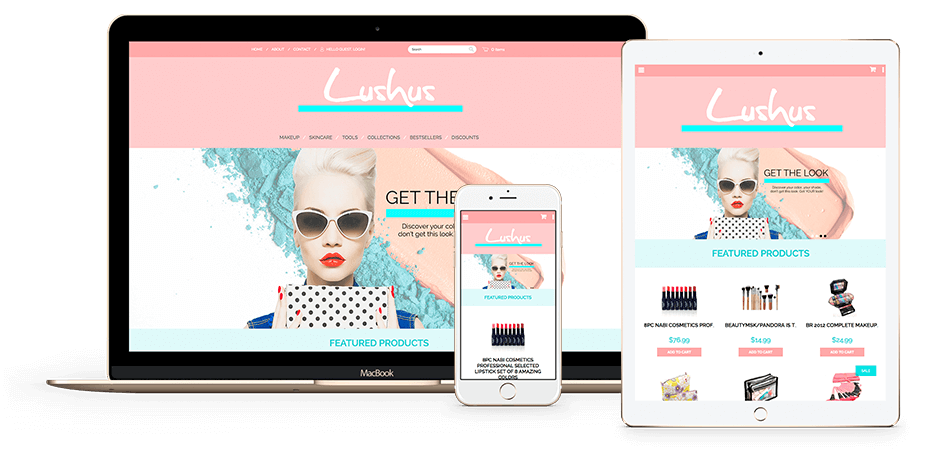How to Choose the Right Website Design for Your Business or Personal Brand
How to Choose the Right Website Design for Your Business or Personal Brand
Blog Article
Modern Web Site Design That Captures Attention and Converts
In a progressively electronic landscape, contemporary web site style has actually emerged as an essential aspect in recording individual attention and driving conversions. As we check out these important parts, it becomes clear that comprehending their interaction can substantially affect a web site's performance and individual fulfillment.
Relevance of Visual Power Structure
Aesthetic power structure is an essential component in web site design, as it overviews customers' attention and enhances their total experience. By purposefully arranging material, designers can direct individuals to the most important information first, thus boosting interaction and improving use.
Incorporating a rational flow in content plan is vital; for example, positioning the most critical information at the top of a page promotes prompt acknowledgment. Regular usage of typography, such as varying font dimensions and designs, helps establish a clear web content structure. This company not only help in navigating yet likewise constructs trust fund, as customers feel a lot more comfy when they can easily locate what they are searching for.
Eventually, a well-executed aesthetic hierarchy not just enhances visual charm yet additionally substantially influences individual behavior. By focusing on crucial elements and guaranteeing a seamless experience, developers can properly transform site visitors into consumers, enhancing the relevance of this fundamental design principle in contemporary internet site development.
Responsive Style for All Devices
Producing a seamless experience throughout numerous devices is crucial in today's digital landscape, where individuals gain access to web sites from smart devices, tablet computers, and desktops alike. Receptive layout is a critical strategy that guarantees websites adapt fluidly to various display alignments, resolutions, and sizes. By employing versatile grids, pictures, and CSS media questions, developers can produce designs that maintain visual stability and functionality, no matter of the gadget being made use of.
The significance of receptive design expands beyond aesthetics; it straight impacts customer interaction and conversion prices. A site that operates well on all devices urges longer check outs and lowers bounce rates, as customers are more probable to engage with material that is very easy to navigate. Search engines, particularly Google, focus on mobile-friendly websites in their rankings, making receptive layout an important part of search engine optimization (SEO)
Integrating receptive style not only enhances user experience but likewise simplifies the growth process. By producing a single website that functions throughout tools, companies can conserve time and resources compared to establishing different mobile and desktop computer variations. Ultimately, responsive style is a basic strategy for modern-day website style, making sure access and complete satisfaction for all users, despite their gadget.
Engaging Interactive Elements
While a receptive design prepares for a functional website, incorporating interesting interactive components is crucial for capturing user focus and promoting deeper connections. Website Design. Interactive elements, such as computer animations, quizzes, and clickable infographics, produce a more dynamic customer experience, motivating visitors to spend even more time on the website
Integrating interactive features can additionally lead customers with complex details, making it easier to absorb material. For example, interactive sliders can illustrate product variations, while ingrained videos can provide presentations or testimonies that reverberate more than fixed images or text. Additionally, gamification techniques, like benefits for involving or completing tasks with web content, can improve user inspiration and retention.
Effective usage of interactive aspects not only improves the user experience however can additionally lead to higher conversion prices. It is important to stabilize interactivity with efficiency; overly complex features may read this hinder site rate, adversely influencing customer complete satisfaction.
Structured Navigating Practices
Reliable navigating is a keystone of any kind of effective web site, as it straight affects customer experience and web content availability. Structured navigation methods make sure that individuals can easily locate information, boosting their communication with the website. A well-structured navigating menu ought to be user-friendly and easy, typically including a minimal variety of main classifications to prevent overwhelming site visitors.
To achieve structured navigation, designers need to prioritize a Continued hierarchical structure that logically arranges material. Carrying out breadcrumb trails can provide customers with context regarding their present place within the site, enabling seamless backtracking. In addition, using drop-down menus can efficiently preserve area while still providing accessibility to subcategories.
Receptive style is essential, as navigating must be practical across all tools (Website Design). Mobile individuals, particularly, take advantage of touch-friendly food selections and collapsible sections that keep functionality without endangering visual appeals

Efficient Call-to-Action Strategies
A well-crafted call-to-action (CTA) is necessary for leading individuals toward desired results on a website, as it motivates them to involve with content or purchase. To optimize their performance, CTAs ought to be clear, engaging, and strategically put throughout the site.
First, utilize action-oriented language that communicates necessity or value, such as "Start," "Join Currently," or "Case Your Price cut." This language not only encourages customers but likewise establishes clear expectations regarding the following steps.
2nd, consider style components; CTAs ought to stand apart aesthetically via contrasting shades, sufficient whitespace, and noticeable positioning. A button that is very easy to see and click increases the description possibility of individual communication.
Additionally, customizing CTAs based upon customer behavior or demographics can considerably improve involvement. Tailored messages resonate much more with customers, driving greater conversion prices.

Conclusion
Finally, modern-day site style emphasizes the combination of aesthetic hierarchy, responsive designs, involving interactive aspects, structured navigating, and reliable call-to-action strategies. These elements collectively improve individual experience, ensuring that visitors stay engaged and encouraged to check out material additionally. By focusing on these layout concepts, businesses can considerably improve user retention and conversion rates, eventually causing higher success in the electronic landscape. The continual development of website design highlights its critical duty in reliable online communication and advertising and marketing.
In a progressively digital landscape, modern site style has arised as a crucial aspect in catching individual attention and driving conversions.Aesthetic power structure is a crucial component in website layout, as it guides customers' interest and improves their overall experience.The significance of receptive style extends past aesthetics; it straight affects customer involvement and conversion prices.Integrating responsive design not just improves customer experience but likewise improves the growth process. Inevitably, responsive design is a basic method for modern web site layout, making sure availability and contentment for all users, no matter of their tool.
Report this page